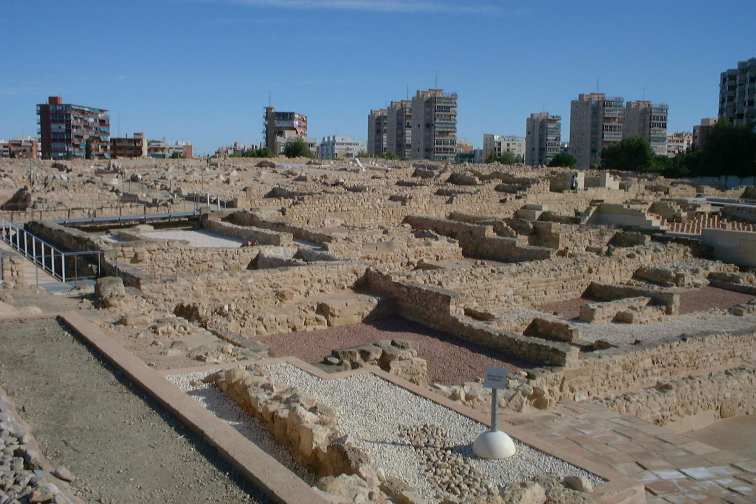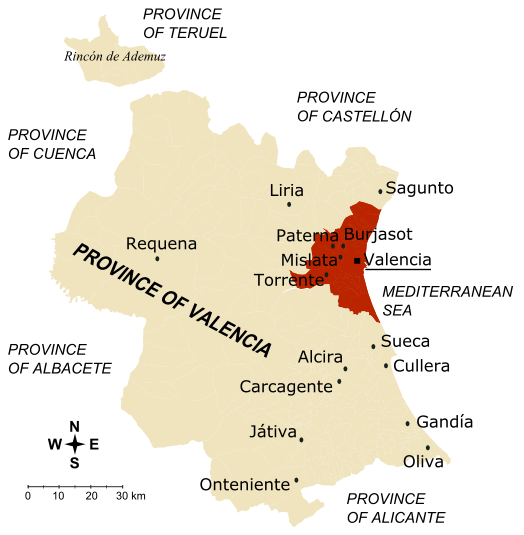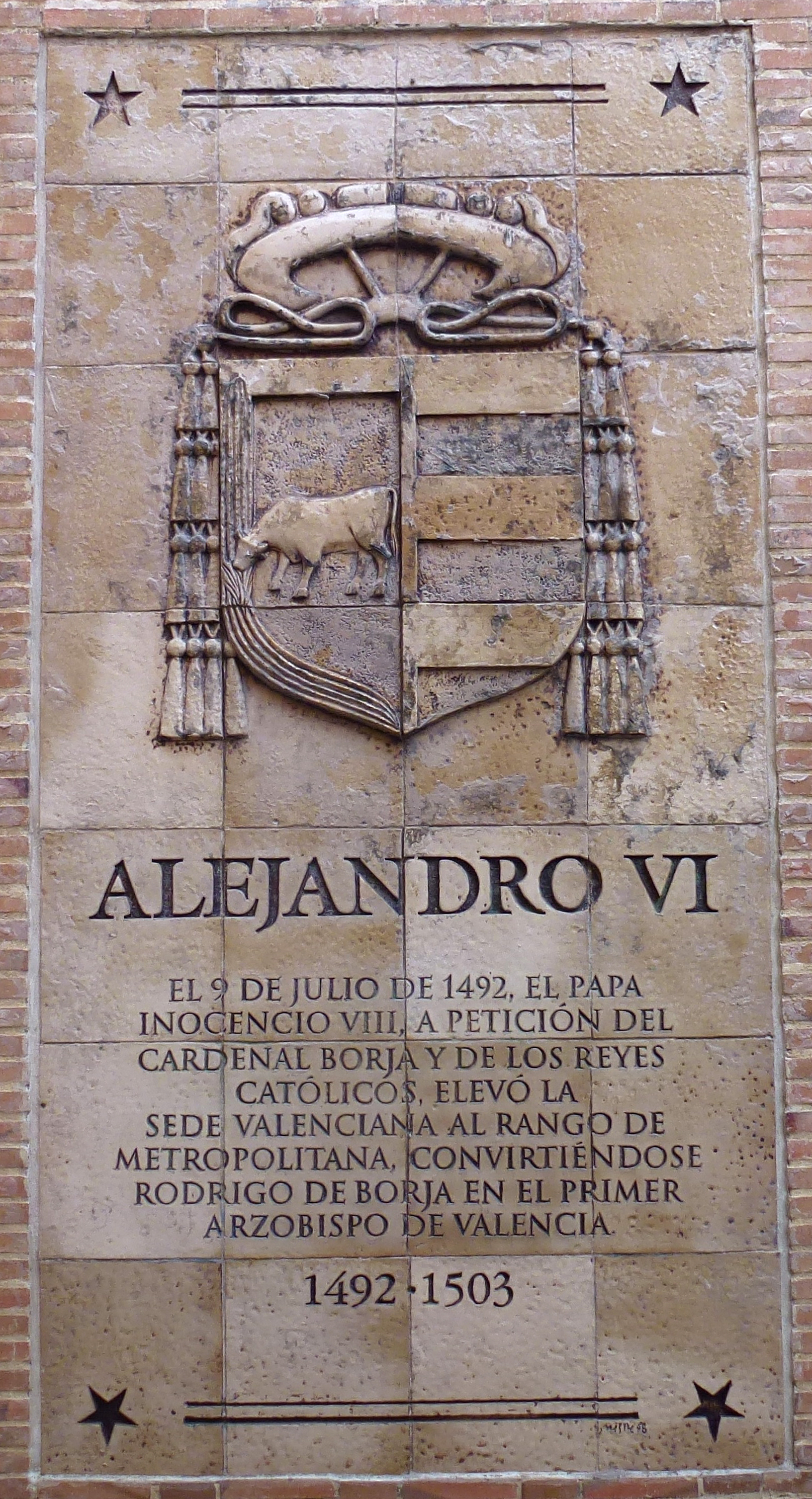|
Birthplace Of Pope Alexander VI
The natal house of the Pope Alexander VI is located in Xàtiva (Valencia, Spain). It is a small urban house, where the Pope Alexander VI was born and lived in the Kingdom of Valencia, Spain. According to the tradition, at the number 5 of the old square of ''Aldomar'', currently Alexander VI Square, was the birthplace of Rodrigo de Borja. From the original house where Alexander VI was born is preserved the door façade. See also * Route of the Borgias The Route of the Borgias is a cultural route, that includes sites associated with the Borja or ''Borgia'', located in their native Valencian Community, Spain. The marketing of the route was inaugurated in 2007.Source: ABCPaseo por la hi ... References External links * Pope Alexander VI Buildings and structures in the Valencian Community Route of the Borgias Alexander VI, Pope Xàtiva {{Valencia-struct-stub ... [...More Info...] [...Related Items...] OR: [Wikipedia] [Google] [Baidu] |
Xàtiva
Xàtiva (; ) is a town in eastern Spain, in the province of Valencia, on the right (western) bank of the river Albaida and at the junction of the Valencia, Spain, Valencia–Murcia and Valencia Albacete railways. It is located 25 km west of the Mediterranean Sea. During the Al-Andalus Islamic era, Arabs brought the technology to manufacture paper to Xàtiva. In the 12th century, Xàtiva was known for its schools, education, and learning circles. Islamic scholar Abu Ishaq al-Shatibi's last name refers to Xàtiva where he lived and died. After the Reconquista by Northern Christian kingdoms and the following Christian repopulation, the city became the cradle of one of the most powerful and controversial families of the Renaissance, the House of Borgia, which produced Popes like Callixtus III (Alfonso de Borgia) and Alexander VI (Rodrigo de Borgia). History Xàtiva (''Saetabis'' in Latin) was famous in Roman times for its linen fabrics, mentioned by the Latin poets Ov ... [...More Info...] [...Related Items...] OR: [Wikipedia] [Google] [Baidu] |
Valencian Community
The Valencian Community is an Autonomous communities of Spain, autonomous community of Spain. It is the fourth most populous Spanish Autonomous communities of Spain, autonomous community after Andalusia, Catalonia and the Community of Madrid with more than five million inhabitants.Instituto Nacional de Estadística, Madrid, 2020. Its eponymous capital Valencia is the third largest city and metropolitan area in Spain. It is located along the Mediterranean Sea, Mediterranean coast on the east side of the Iberian Peninsula. It borders Catalonia to the north, Aragon and Castilla–La Mancha to the west, and Region of Murcia, Murcia to the south, and the Balearic Islands are to its east. The Valencian Community is divided into three Provinces of Spain, provinces: province of Castellón, Castellón, province of Valencia, Valencia and province of Alicante, Alicante. According to Valencia's Statute of Autonomy, the Valencian people are a ''nationalities and regions of Spain, "historical ... [...More Info...] [...Related Items...] OR: [Wikipedia] [Google] [Baidu] |
Valencian Barroque
Valencian can refer to: * Something related to the Valencian Community ( Valencian Country) in Spain * Something related to the city of Valencia * Something related to the province of Valencia in Spain * Something related to the old Kingdom of Valencia * The Valencian language, commonly regarded as a variety of the Catalan language * Valencians Valencians ( ; ) are the native people of the Valencian Community, in eastern Spain. Since 2006, the Valencian people are officially recognised in the Valencian Statute of Autonomy as a ''nationality'' "within the unity of the Spanish nation". ..., the natives of the Valencian Community {{disambiguation Language and nationality disambiguation pages ... [...More Info...] [...Related Items...] OR: [Wikipedia] [Google] [Baidu] |
Province Of Valencia
Valencia ( , ), officially València (), is a provinces of Spain, province of Spain, in the central part of the autonomous Valencian Community. Of the province's 2.7 million people (2024), almost one-third live in the capital, Valencia, which is also the capital of the autonomous community and the list of metropolitan areas in Spain, 3rd biggest city in Spain, with a metropolitan area of 2,522,383 people it is also one of the most populated cities of Southern Europe. There are 265 List of municipalities in Valencia, municipalities in the province. History Although the Spanish Constitution of 1812 loosely created the province of València, a stable administrative entity does not arise until the territorial division of Spain in 1833, remaining today without major changes. The Provincial Council of Valencia dates from that period. After the Valencian Statute of Autonomy of 1982, the province became part of the Valencian Community. Valencian language, Valencian and Spanish langua ... [...More Info...] [...Related Items...] OR: [Wikipedia] [Google] [Baidu] |
Spain
Spain, or the Kingdom of Spain, is a country in Southern Europe, Southern and Western Europe with territories in North Africa. Featuring the Punta de Tarifa, southernmost point of continental Europe, it is the largest country in Southern Europe and the fourth-most populous European Union member state. Spanning across the majority of the Iberian Peninsula, its territory also includes the Canary Islands, in the Eastern Atlantic Ocean, the Balearic Islands, in the Western Mediterranean Sea, and the Autonomous communities of Spain#Autonomous cities, autonomous cities of Ceuta and Melilla, in mainland Africa. Peninsular Spain is bordered to the north by France, Andorra, and the Bay of Biscay; to the east and south by the Mediterranean Sea and Gibraltar; and to the west by Portugal and the Atlantic Ocean. Spain's capital and List of largest cities in Spain, largest city is Madrid, and other major List of metropolitan areas in Spain, urban areas include Barcelona, Valencia, Seville, ... [...More Info...] [...Related Items...] OR: [Wikipedia] [Google] [Baidu] |
Pope Alexander VI
Pope Alexander VI (, , ; born Roderic Llançol i de Borja; epithet: ''Valentinus'' ("The Valencian"); – 18 August 1503) was head of the Catholic Church and ruler of the Papal States from 11 August 1492 until his death in 1503. Born into the prominent Borja family in Xàtiva in the Kingdom of Valencia under the Crown of Aragon, he was known as Roderic de Borja, and he is commonly referred to by the Italianized form as Rodrigo Borgia. He studied law at the University of Bologna. He was ordained deacon and made a cardinal in 1456 after the election of his uncle as Pope Callixtus III, and a year later he became vice-chancellor of the Catholic Church. He proceeded to serve in the Roman Curia under the next four popes, acquiring significant influence and wealth in the process. In 1492, Rodrigo was elected pope, taking the name Alexander VI. Alexander's papal bulls of 1493 confirmed or reconfirmed the rights of the Spanish crown in the New World following the finds of Christop ... [...More Info...] [...Related Items...] OR: [Wikipedia] [Google] [Baidu] |
Kingdom Of Valencia
The Kingdom of Valencia (; ; ), located in the eastern shore of the Iberian Peninsula, was one of the component realms of the Crown of Aragon. The Kingdom of Valencia was formally created in 1238 when the Moorish taifa of Valencia was taken in the course of the Reconquista. It was dissolved, alongside the other components of the old crown of Aragon, by Philip V of Spain in 1707, by means of the Nueva Planta decrees, as a result of the Spanish War of Succession. During its existence, the Kingdom of Valencia was ruled by the laws and institutions stated in the Furs of Valencia, ''Furs'' (charters) of Valencia; these charters granted it wide self-government under the Crown of Aragon and, later on, under the Spanish Kingdom. The boundaries and identity of the present Spanish autonomous community of the Valencian Community are essentially those of the former Kingdom of Valencia. Reconquest The conquest of what would later become the Kingdom of Valencia started in 1232 when the ki ... [...More Info...] [...Related Items...] OR: [Wikipedia] [Google] [Baidu] |
Route Of The Borgias
The Route of the Borgias is a cultural route, that includes sites associated with the Borja or ''Borgia'', located in their native Valencian Community, Spain. The marketing of the route was inaugurated in 2007.Source: ABCPaseo por la historia de los Borja. The Borgias were a family of Aragonese origin, who settled in the Kingdom of Valencia, after its King James I of Aragon wrested control from Moorish rulers. In most translations, the family is known as the Borgia, the Italian way of transcribing the ''Borja'' surname from Valencian. The Popes Callixtus III and Alexander VI, Cesare Borgia and Lucrezia Borgia and Francis Borgia are the best-known figures of this lineage that originated in Canals and Xàtiva, and via Valencia came to Rome, then return to Valencia to refound the Duchy of Gandia. The route through the legacy of the Borgias has its beginning in the city of Gandia and ends in Valencia passing through various monuments and Valencian towns where the Borja l ... [...More Info...] [...Related Items...] OR: [Wikipedia] [Google] [Baidu] |
Buildings And Structures In The Valencian Community
A building or edifice is an enclosed structure with a roof, walls and windows, usually standing permanently in one place, such as a house or factory. Buildings come in a variety of sizes, shapes, and functions, and have been adapted throughout history for numerous factors, from building materials available, to weather conditions, land prices, ground conditions, specific uses, prestige, and aesthetic reasons. To better understand the concept, see ''Nonbuilding structure'' for contrast. Buildings serve several societal needs – occupancy, primarily as shelter from weather, security, living space, privacy, to store belongings, and to comfortably live and work. A building as a shelter represents a physical separation of the human habitat (a place of comfort and safety) from the ''outside'' (a place that may be harsh and harmful at times). buildings have been objects or canvasses of much artistic expression. In recent years, interest in sustainable planning and building practi ... [...More Info...] [...Related Items...] OR: [Wikipedia] [Google] [Baidu] |





